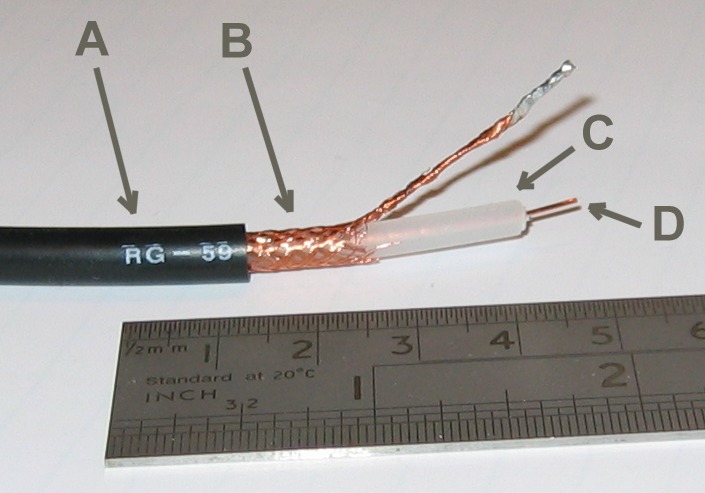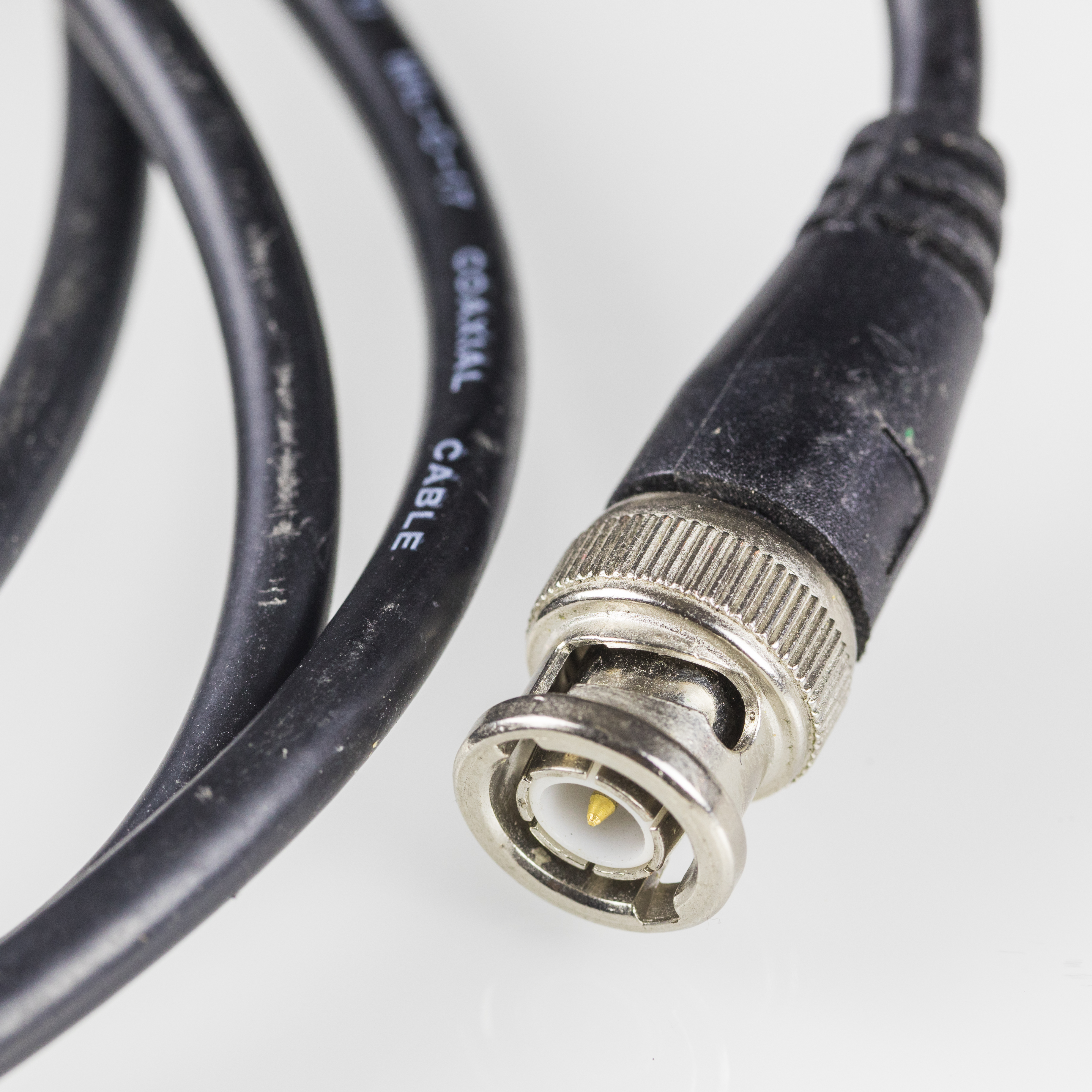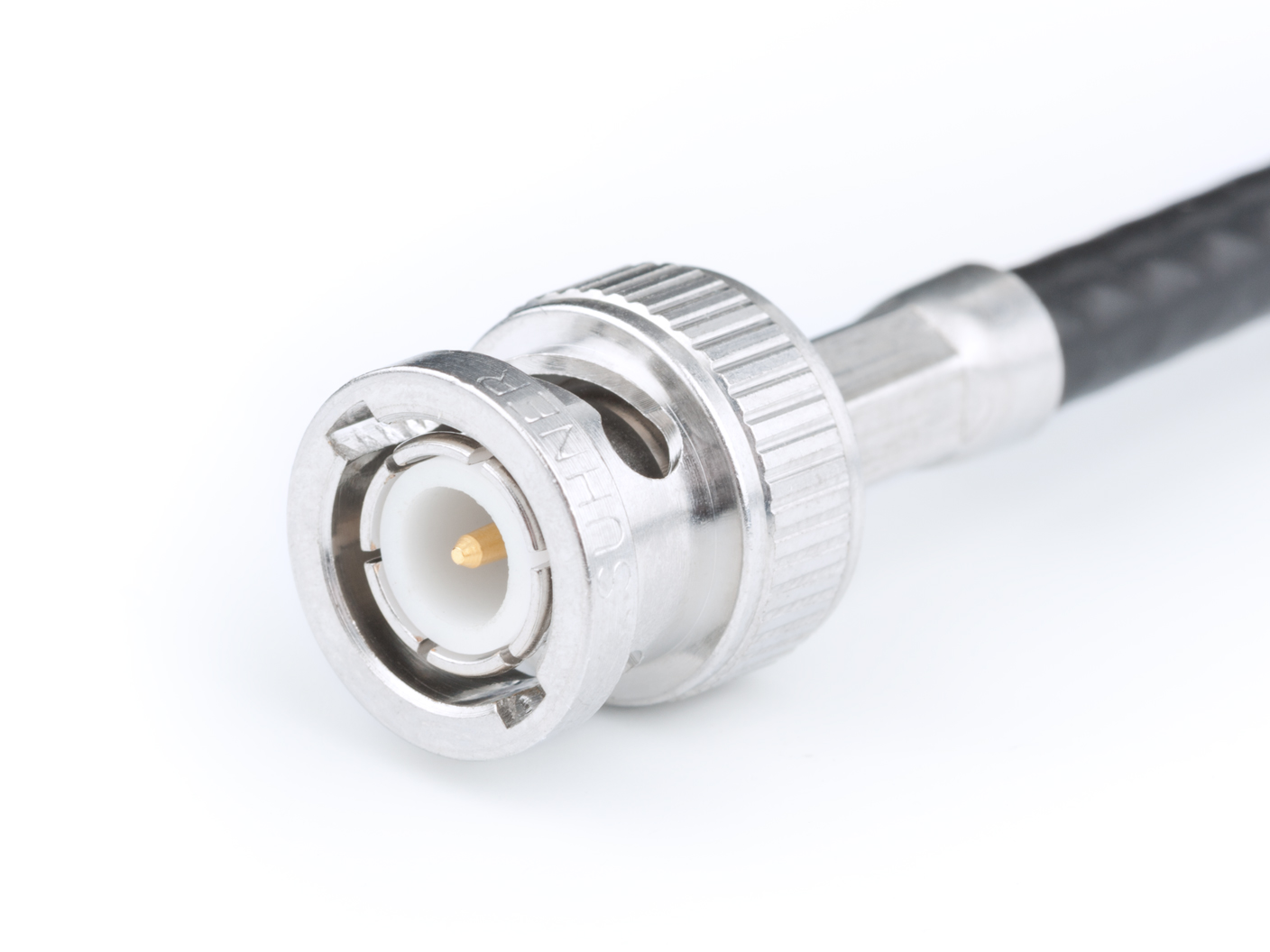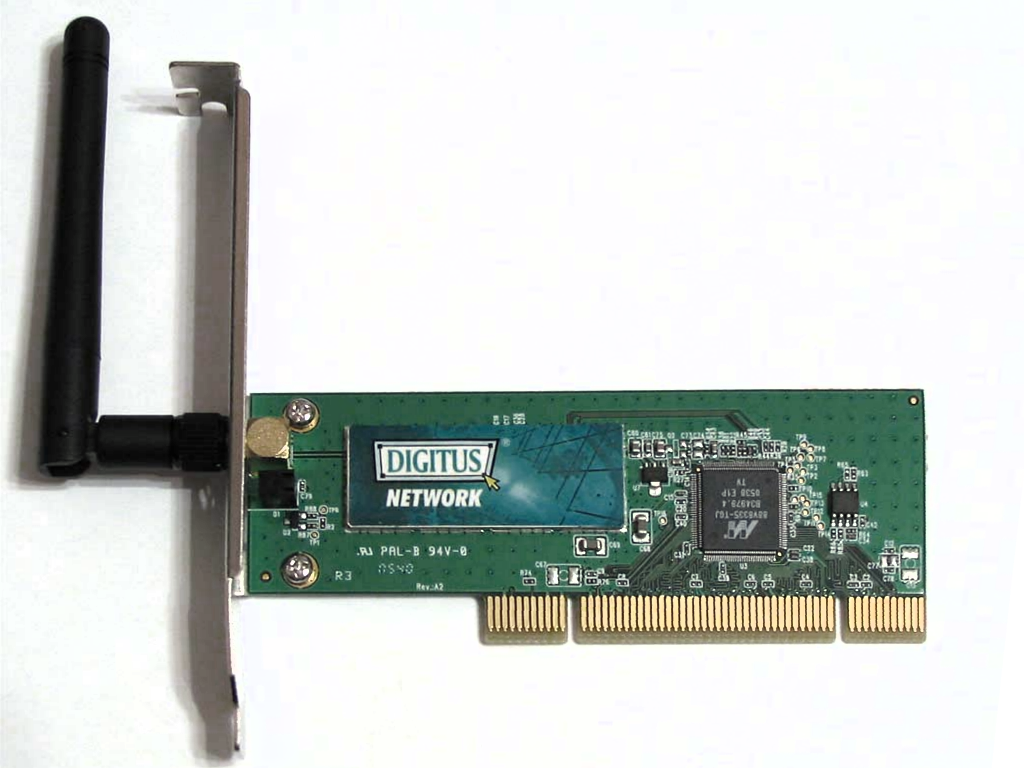|
RG-58
RG-58/U is a type of coaxial cable often used for low-power signal and RF connections. The cable has a characteristic impedance of either 50 or 52 Ω. "RG" was originally a unit indicator for bulk RF cable in the U.S. military's Joint Electronics Type Designation System. There are several versions covering the differences in core material (solid or braided wire) and shield (70% to 95% coverage). The outside diameter of RG-58 is around 0.2 inches (5 mm). RG-58 weighs around 0.025 lb/ft (37 g/m), exhibits approximately 25 pF/ft (82 pF/m) capacitance and can tolerate a maximum of 300 V potential (1800 W). Plain RG-58 cable has a solid center conductor. The RG-58A/U features a flexible 7- or 19-strand center conductor. Most two-way radio communication systems, such as marine, CB radio, amateur, police, fire, WLAN antennas etc., are designed to work with a 50 Ω cable. RG-58 cable is often used as a generic carrier of signals in l ... [...More Info...] [...Related Items...] OR: [Wikipedia] [Google] [Baidu] |
Coaxial Cable
Coaxial cable, or coax (pronounced ), is a type of electrical cable consisting of an inner Electrical conductor, conductor surrounded by a concentric conducting Electromagnetic shielding, shield, with the two separated by a dielectric (Insulator (electricity), insulating material); many coaxial cables also have a protective outer sheath or jacket. The term ''coaxial'' refers to the inner conductor and the outer shield sharing a geometric axis. Coaxial cable is a type of transmission line, used to carry high-frequency Signal, electrical signals with low losses. It is used in such applications as telephone trunk lines, Internet access, broadband internet networking cables, high-speed computer bus (computing), data buses, cable television signals, and connecting Transmitter, radio transmitters and Radio receiver, receivers to their Antenna (radio), antennas. It differs from other shielded cables because the dimensions of the cable and connectors are controlled to give a precise, ... [...More Info...] [...Related Items...] OR: [Wikipedia] [Google] [Baidu] |
10BASE2
10BASE2 (also known as cheapernet, thin Ethernet, thinnet, and thinwire) is a variant of Ethernet that uses thin coaxial cable terminated with BNC connectors to build a local area network. During the mid to late 1980s, this was the dominant Ethernet standard. The use of twisted pair networks competed with 10BASE2's use of a single coaxial cable. In 1988, Ethernet over twisted pair was introduced, running at the same speed of 10 Mbit/s. In 1995, the Fast Ethernet standard upgraded the speed to 100 Mbit/s, and no such speed improvement was ever made for thinnet. By 2001, prices for Fast Ethernet cards had fallen to under $50. By 2003, Wi-Fi networking equipment was widely available and affordable. Due to the immense demand for high-speed networking, the low cost of Category 5 cable, and the popularity of 802.11 wireless networks, both 10BASE2 and 10BASE5 have become increasingly obsolete, though devices still exist in some locations. As of 2011, IEEE 802.3 has ... [...More Info...] [...Related Items...] OR: [Wikipedia] [Google] [Baidu] |
RG-59
RG-59/U is a specific type of coaxial cable, often used for low-power video and Radio frequency, RF signal connections. The cable has a characteristic impedance of 75 Ohm (unit), ohms, and a capacitance of around 20pF/ft (60pF/m). The 75 ohm impedance matches a dipole antenna in free space. ''RG'' (for ''radio guide'') was originally a unit indicator for bulk radio frequency (RF) cable in the U.S. military's Joint Electronics Type Designation System. The suffix ''/U'' means ''for general utility use''. The number ''59'' was assigned sequentially. The ''RG'' unit indicator is no longer part of the JETDS system (MIL-STD-196E) and cable sold today under the RG-59 label does not necessarily meet military specifications. RG-59 is often used at baseband video frequencies, such as composite video. It may also be used for broadcast frequencies, but its high-frequency losses are too high to allow its use over long distances; in these applications, RG-6 or RG-11 are used instead. I ... [...More Info...] [...Related Items...] OR: [Wikipedia] [Google] [Baidu] |
Ethernet
Ethernet ( ) is a family of wired computer networking technologies commonly used in local area networks (LAN), metropolitan area networks (MAN) and wide area networks (WAN). It was commercially introduced in 1980 and first standardized in 1983 as IEEE 802.3. Ethernet has since been refined to support higher bit rates, a greater number of nodes, and longer link distances, but retains much backward compatibility. Over time, Ethernet has largely replaced competing wired LAN technologies such as Token Ring, FDDI and ARCNET. The original 10BASE5 Ethernet uses a thick coaxial cable as a shared medium. This was largely superseded by 10BASE2, which used a thinner and more flexible cable that was both less expensive and easier to use. More modern Ethernet variants use Ethernet over twisted pair, twisted pair and fiber optic links in conjunction with Network switch, switches. Over the course of its history, Ethernet data transfer rates have been increased from the original to the lates ... [...More Info...] [...Related Items...] OR: [Wikipedia] [Google] [Baidu] |
Oscilloscope
An oscilloscope (formerly known as an oscillograph, informally scope or O-scope) is a type of electronic test instrument that graphically displays varying voltages of one or more signals as a function of time. Their main purpose is capturing information on electrical signals for debugging, analysis, or characterization. The displayed waveform can then be analyzed for properties such as amplitude, frequency, rise time, time interval, distortion, and others. Originally, calculation of these values required manually measuring the waveform against the scales built into the screen of the instrument. Modern digital instruments may calculate and display these properties directly. Oscilloscopes are used in the sciences, engineering, biomedical, automotive and the telecommunications industry. General-purpose instruments are used for maintenance of electronic equipment and laboratory work. Special-purpose oscilloscopes may be used to analyze an automotive ignition system or to display th ... [...More Info...] [...Related Items...] OR: [Wikipedia] [Google] [Baidu] |
Category 6 Cable
Category 6 cable (Cat 6) is a standardized twisted pair cable for Ethernet and other network physical layers that is backward compatible with the Category 5/5e and Category 3 cable standards. Cat 6 must meet more stringent specifications for crosstalk and system noise than Cat 5 and Cat 5e. The cable standard specifies performance of up to 250 MHz, compared to 100 MHz for Cat 5 and Cat 5e. Whereas Category 6 cable has a reduced maximum length of when used for 10GBASE-T, Category 6A cable is specified for 500 MHz and has improved alien crosstalk characteristics, allowing 10GBASE-T to be run for the same maximum distance as previous Ethernet over twisted pair variants. History Cat 6, an unshielded twisted-pair (UTP) design, emerged as an advancement of the UTP Cat 5e and was formalised in 2001. The design of Cat 6 required more stringent precision in manufacturing, which enabled reduced noise ... [...More Info...] [...Related Items...] OR: [Wikipedia] [Google] [Baidu] |
Category 5 Cable
Category 5 cable (Cat 5) is a twisted pair cable for computer networks. Since 2001, the variant commonly in use is the Category 5e specification (Cat 5e). The cable standard provides performance of up to 100 MHz and is suitable for most varieties of Ethernet over twisted pair up to 2.5GBASE-T but more commonly runs at (Gigabit Ethernet) speeds. Cat 5 is also used to carry other signals such as telephone and video. This cable is commonly connected using punch-down blocks and modular connectors. Most Category 5 cables are Electromagnetic shielding, unshielded, relying on the balanced line twisted pair design and differential signaling for noise suppression. Standards Category 5 is currently defined in ISO/IEC 11801, IEC 61156 and EN 50173, though it was originally defined in ANSI/TIA/EIA-568-A (with clarification in TSB-95). These documents specify performance characteristics and test requirements for frequencies up to 100 MHz. The ... [...More Info...] [...Related Items...] OR: [Wikipedia] [Google] [Baidu] |
BNC Connector
The BNC connector is a miniature quick-connect/disconnect RF connector, radio-frequency connector for coaxial cable. It was introduced on military radio equipment in the 1940s, and has since become widely used in radio systems and as a common type of video connector. It has a twist-to-lock design, where two lugs on the Gender of connectors and fasteners, female connector engage slots in the shell of the Gender of connectors and fasteners, male one. BNC is designed to maintain the characteristic impedance of the cable across the connection, and is made in 50-ohm and 75-ohm versions. It is normally used for radio-frequency signals up to about 2 gigahertz and 500 volts. Similar radio-frequency connectors differ in dimensions and attachment features, and may allow for higher voltages, higher frequencies, or three-wire connections. History In 1941, the US Navy used a smaller version of the threaded N connector, the Type BN (Baby N), as the UG-85/U, UG-86/U, UG-114/U and UG- ... [...More Info...] [...Related Items...] OR: [Wikipedia] [Google] [Baidu] |
Radio Frequency
Radio frequency (RF) is the oscillation rate of an alternating electric current or voltage or of a magnetic, electric or electromagnetic field or mechanical system in the frequency range from around to around . This is roughly between the upper limit of audio frequencies that humans can hear (though these are not electromagnetic) and the lower limit of infrared frequencies, and also encompasses the microwave range. These are the frequencies at which energy from an oscillating current can radiate off a conductor into space as radio waves, so they are used in radio technology, among other uses. Different sources specify different upper and lower bounds for the frequency range. Electric current Electric currents that oscillate at radio frequencies (RF currents) have special properties not shared by direct current or lower audio frequency alternating current, such as the 50 or 60 Hz current used in electrical power distribution. * Energy from RF currents in conduct ... [...More Info...] [...Related Items...] OR: [Wikipedia] [Google] [Baidu] |
Wireless LAN
A wireless LAN (WLAN) is a wireless computer network that links two or more devices using wireless communication to form a local area network (LAN) within a limited area such as a home, school, computer laboratory, campus, or office building. This gives users the ability to move around within the area and remain connected to the network. Through a Gateway (telecommunications), gateway, a WLAN can also provide a connection to the wider Internet. Wireless LANs based on the IEEE 802.11 standards are the most widely used computer networks in the world. These are commonly called Wi-Fi, which is a trademark belonging to the Wi-Fi Alliance. They are used for home and small office networks that link together laptop computers, printer (computing), printers, smartphones, Web TVs and gaming devices through a Wireless router, wireless network router, which in turn may link them to the Internet. Hotspot (Wi-Fi), Hotspots provided by routers at restaurants, coffee shops, hotels, libraries, ... [...More Info...] [...Related Items...] OR: [Wikipedia] [Google] [Baidu] |
Amateur Radio
Amateur radio, also known as ham radio, is the use of the radio frequency radio spectrum, spectrum for purposes of non-commercial exchange of messages, wireless experimentation, self-training, private recreation, radiosport, contesting, and emergency, emergency communications. The term ''"radio amateur"'' is used to specify ''"a duly authorized person interested in radioelectric practice with a purely personal aim and without wikt:pecuniary, pecuniary interest"'' (either direct monetary or other similar reward); and to differentiate it from commercial broadcasting, public safety (police and fire), or two-way radio professional services (maritime, aviation, taxis, etc.). The amateur radio service (''amateur service'' and ''amateur-satellite service'') is established by the International Telecommunication Union (ITU) through their recommended radio regulations. National governments regulate technical and operational characteristics of transmissions and issue individual station li ... [...More Info...] [...Related Items...] OR: [Wikipedia] [Google] [Baidu] |







